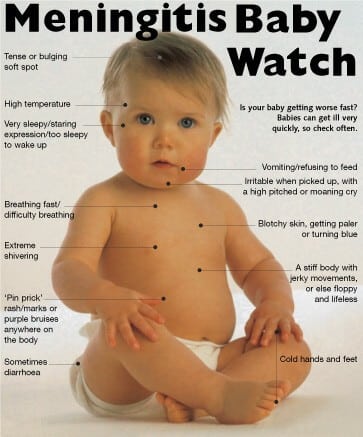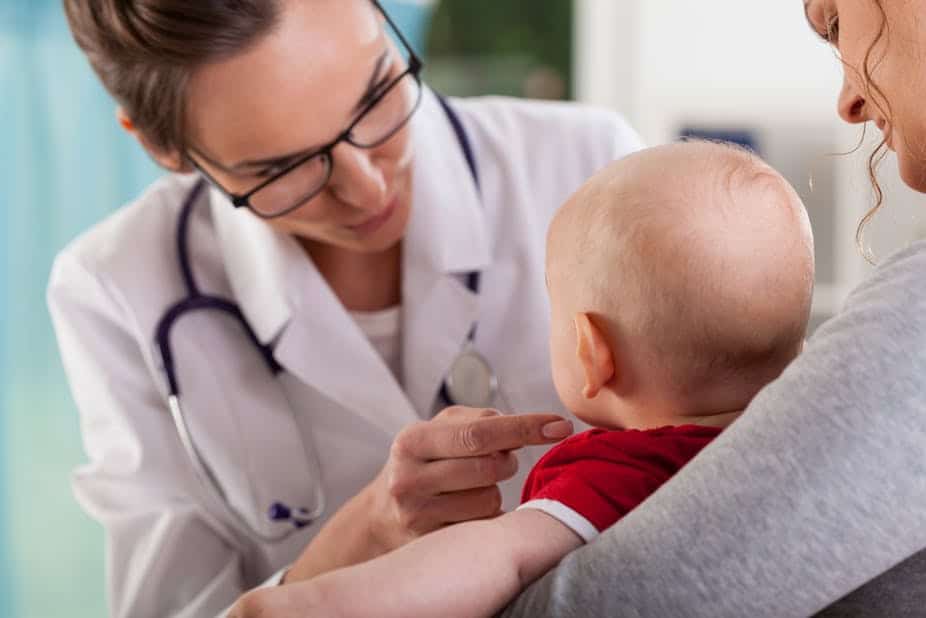Parents, do NOT wait until you learn the hard before you heed!!! Paracetamol in children does not treat any disease; it only calms fever. It is suicidal keeping a child with fever and refusing to eat at home for 3 (three) days without taking him/her to the hospital. If you cannot afford private hospital bill, take your child to government owned hospital PLEASE.
Meningitis is an infection of the brain and spinal cord coverings and CSF. It is potentially a serious infection in infant and older children associated with a lot of complications. Most cases are seen among children below the age of 5 years. Males are usually more affected than females. Meningitis can be caused by bacteria, Mycobacterium tuberculosis, virus or fungi.
Brain and spinal cord are covered by 3 membranes (sheet) which are- dura mater, arachnoid and pia mater. The combination of arachnoid and pia mater is called leptomeninges. In between these two membranes is Cerebrospinal Fluid (CSF).
The most common form of meningitis in children is bacterial meningitis. It is a life-threatening illness.
HOW DOES BACTERIA REACH THE BRAIN?
Bacteria reach the brain through infection from other parts of the body e.g ear, sinuses, throat, lungs etc. The spread is by blood flow.
RISK FACTORS FOR MENINGITIS
- Overcrowding
- Head injury with open wound
- Infections of the ears, nose, throat and eyes (orbital cellulitis)
- Sickle Cell Anaemia
- Skin infections
- As simple as you might think cough is, it can lead to meningitis in children if not treated promptly.
- CSF leakage
ORGANISM CAUSING BACTERIAL MENINGITIS
In children less than 30 days of life: Group B streptococcus, Escherichia coli, Streptococcus pneumonia.
In children less than one year and older children: Hemophilus influenza, Streptococcus pneumonia, Neisseria meningitis, Staphylococcus aureus.
SYMPTOMS OF MENINGITIS
In children less than 30days of age, sign and symptoms include:
- Fever
- Poor feeding
- Convulsion
- Jaundice
- Opisthotonus (abnormal posturing)
- Irritability
- Period cease of breath

In older children, sign and symptoms include:
- Neck stiffness
- Bulging fontanelle
- Convulsion
- Headache
- Vomiting
- Opisthotonus (abnormal posturing)
CLINICAL FEATURES YOU CHILD’S DOCTOR WILL LOOK FOR:
- Kernig and Brudzinski sign
- Papilloedema
- Maculopapular rash
- Oculomotor palsy
- Abducens palsy
- Decorticate and decerebrate posturing
- Cushing triad (hypertension, reduced heart rate and irregular respiration)

OTHER INFECTIONS THAT CAN CAUSE NECK STIFFNESS
- Tonsillitis
- Severe otitis media
- Severe pneumonia
- Tetanus
INVESTIGATIONS
Your doctor might request for the following investigations:
- Lumbar puncture for CSF analysis (glucose, protein, lactate, M/C/S)
- Full blood count
- Blood culture
- Random blood sugar
- Serum electrolyte, urea and creatinine
- Imaging studies: Transfontanelle Ultrasound scan, CT Scan, MRI.
TREATMENT
Once meningitis is suspected or diagnosed, your child will DEFINITELY be admitted. Treatment course usually take up to 14-21 days. Re-examination of CSF for chemistry and culture may be necessary 48-72 hours after initiation of treatment to access response to treatment.
The line of treatment includes:
- Antibiotic therapy
- Steroid therapy
- Fluid and electrolyte therapy
- Serial monitoring of serum electrolyte
- Fluid restriction
- Mannitol therapy
- Audiometry to detect hearing deficit at the point of discharge and 6 weeks later.
COMPLICATIONS OF MENINGITIS
- Muscle paralysis
- Deafness
- Cerebral palsy: click http://www.healthgist.net/2018/12/27/cerebral-palsy-heart-stabbing-pain-to-motherhood/to learn more.
- Mental retardation
- Seizure
- Behavior disorder
- Blindness
- Learning disability
- DEATH
PREVENTION
- Immunization: Hemophilus influenza type b vaccine and conjugate pneumococcal vaccine.
- Chemoprophylaxis
- Since meningitis can be complicated by any disease, ensure complete immunization for your child and consult your doctor once your child is ill.
A STITCH IN TIME SAVES NINE!!!
Image credit: google image

Dr. Adeyemo Olusola is a medical graduate of Olabisi Onabanjo University, Ogun State, Nigeria along with certificate in advanced diploma in Principles of Nutrition, Management and Leadership, Dublin and Certificate in Global Health from London School of Hygiene and Tropical Medicine. In addition to his numerous certifications, he is a certified Telemedicine Physician from Harvard Medical School, USA. He is an avid reader of books from different oases of life, expert in data analysis. “So many a time, I have seen people die avoidable death because of lack of knowledge or information, falling victim of fate. There is then a necessity laid on us to help arm our society to the teeth, as a healthy society cannot be detached from an informed one. Hence, there is need for healthgist.net. We hope you will have a wonderful stay on our website.”

